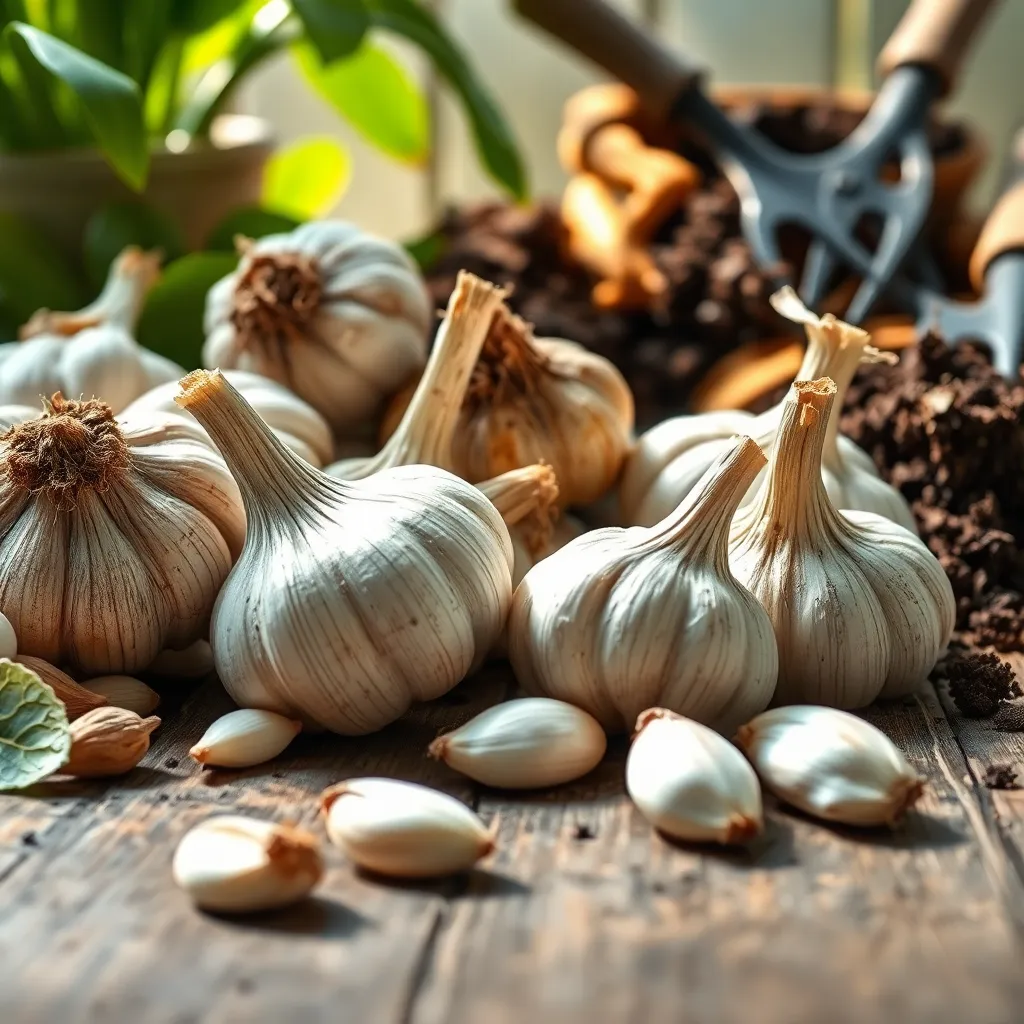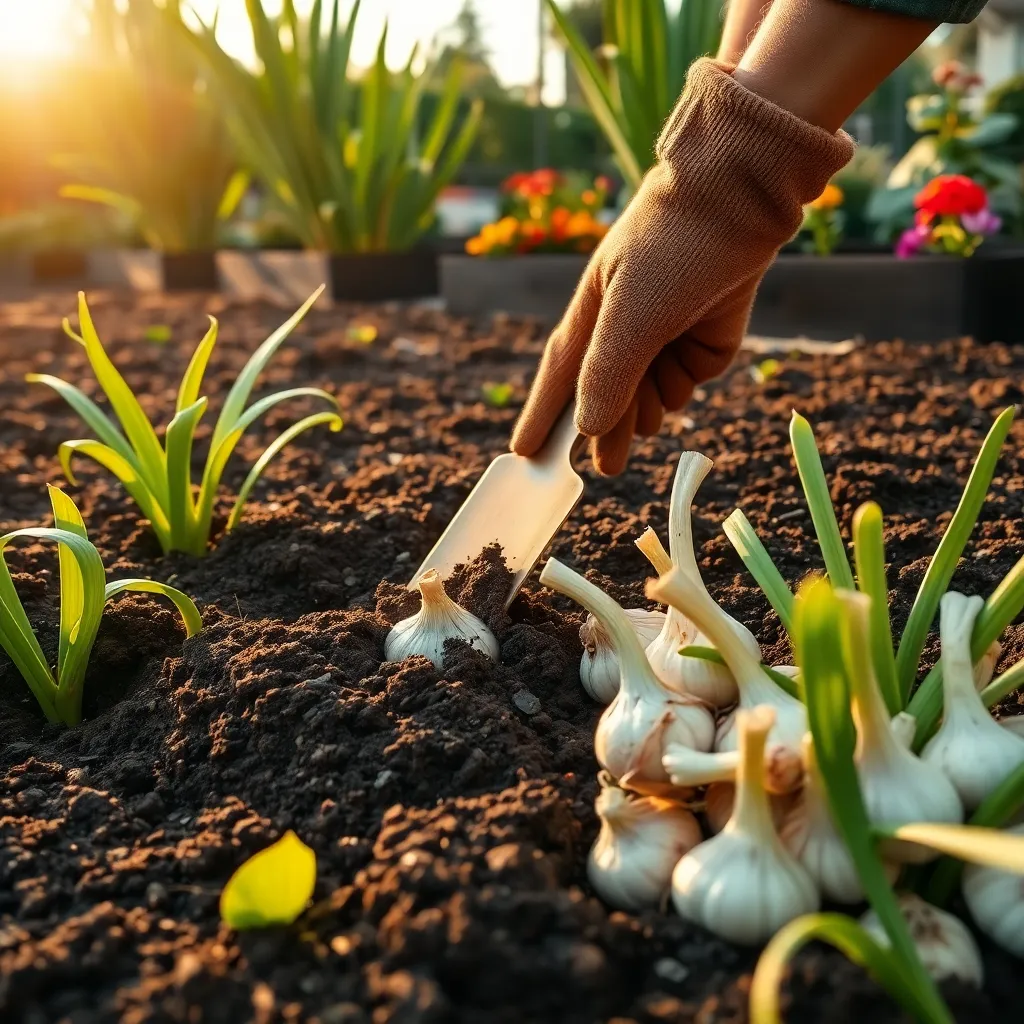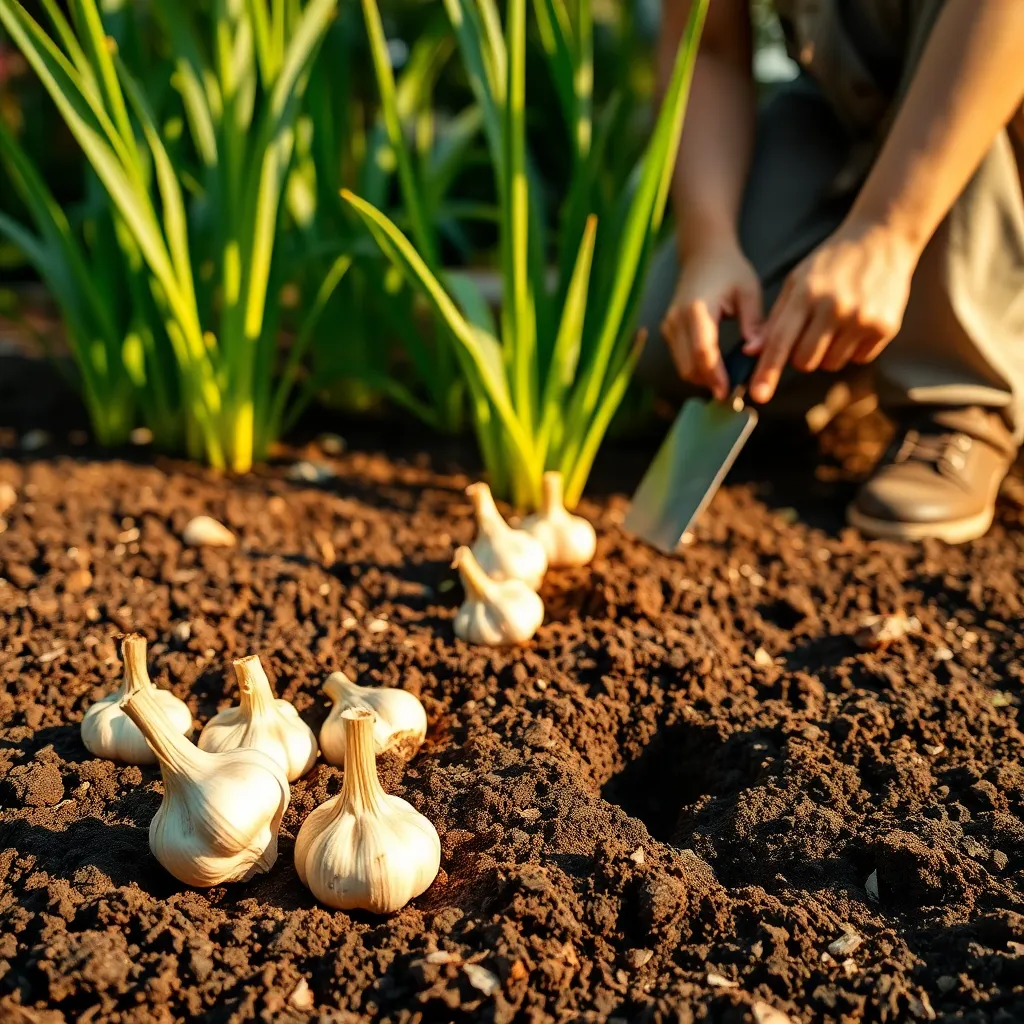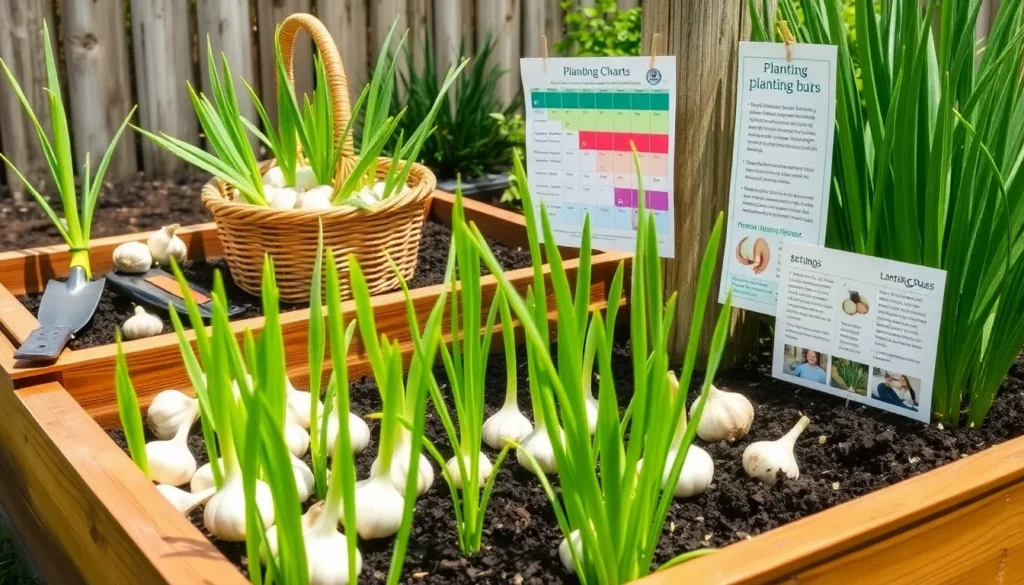For those who relish the idea of transforming their kitchen scraps into thriving garden treasures, growing garlic at home offers a uniquely rewarding experience. Whether you’re a novice gardener or a seasoned horticulturist, cultivating garlic can deepen your connection to the earth, enrich your cooking, and fill your garden with a crop that’s as practical as it is flavorful.
Garlic, with its rich history and indispensable culinary role, deserves a spot in every garden. This resilient bulb not only enhances the taste of countless dishes but also comes packed with health benefits, making it an essential addition to your homegrown produce.
In this article, we’ll guide you through the stages of garlic cultivation, from selecting the right variety to harvesting and storing your bounty. You’ll discover tips and tricks tailored for every skill level, ensuring that your garlic-growing journey is both successful and satisfying.
Select Quality Garlic Bulbs

When selecting garlic bulbs for planting, choose bulbs that are firm to the touch and free from blemishes. Avoid any bulbs with signs of mold or sprouting, as these are less likely to thrive.
Opt for varieties that are well-suited to your climate, as garlic’s growth can be highly dependent on temperature and soil conditions. Hardneck varieties are often better for colder climates, while softneck types thrive in milder regions.
Purchase bulbs from a reputable source, such as a local nursery or a trusted online retailer, to ensure quality and suitability. Certified disease-free bulbs are particularly important to prevent introducing pathogens to your garden.
Advanced gardeners might consider experimenting with different garlic cultivars to enhance their harvest. Try planting a mix of hardneck and softneck varieties to enjoy a range of flavors and storage qualities.
Prepare Well-Drained Soil

Creating well-drained soil is crucial for growing healthy garlic at home. Begin by selecting a planting area with good drainage, such as a raised bed or a gently sloped garden spot.
To improve drainage, mix in organic materials like compost or well-rotted manure. These amendments will not only enhance drainage but also enrich the soil with nutrients, promoting robust garlic growth.
Loam or sandy loam soils are ideal for garlic, as they naturally provide better drainage. If your soil is heavy clay, consider incorporating sand or fine gravel along with organic matter to break it up.
Test your soil’s drainage by digging a hole about 12 inches deep and filling it with water. If the water drains within 30 minutes, your soil is well-drained; if not, further amendments may be necessary.
For those in rainy climates, creating a slight mound of soil for planting can help prevent waterlogging. This technique ensures that excess water drains away from the garlic bulbs, keeping them healthy.
Plant Cloves Correctly

To plant garlic cloves correctly, start by selecting large, healthy cloves, as these will produce the best bulbs. Avoid using small or damaged cloves, as they may lead to stunted growth or weak plants.
Once you have your cloves, separate them carefully from the bulb, ensuring the papery husk remains intact. This protective layer is crucial for preventing rot and disease during the initial growth stages.
When planting, position each clove pointed side up, approximately 2 inches deep in the soil. Space them about 6 inches apart to allow for ample room as they mature and to ensure proper air circulation.
For best results, plant cloves in the fall, around one month before the ground freezes. This timing allows the cloves to establish roots before winter, promoting robust growth in the spring.
Water and Mulch Appropriately

Proper watering is crucial for healthy garlic growth, but overwatering can lead to rot. Water garlic deeply but infrequently to encourage strong root development and avoid soggy soil conditions.
After planting, keep the soil consistently moist until shoots appear, then adjust your watering schedule. As a general rule, water garlic about once a week, ensuring the top inch of soil dries out between sessions.
Mulching is an essential step to conserve moisture and suppress weeds around your garlic plants. Apply a layer of organic mulch, such as straw or shredded leaves, about 2 to 3 inches thick over the soil after planting.
Not only does mulch help maintain soil moisture, but it also protects garlic from extreme temperature fluctuations. As garlic begins to sprout in spring, consider removing some mulch to allow for proper air circulation and light penetration.
For advanced gardeners, using drip irrigation systems can provide precise watering while minimizing water waste. Monitor soil moisture levels with a moisture meter to ensure your garlic is neither too dry nor too wet, adjusting your watering practices accordingly.
Harvest When Leaves Yellow

As your garlic plants mature, carefully observe the leaves, as they will signal the right time to harvest. When the lower leaves start to turn yellow and dry out, usually in mid to late summer, it’s a clear sign that your garlic bulbs have reached maturity.
Begin by gently loosening the soil around the bulbs with a garden fork, taking care not to damage them. It’s important to avoid pulling the garlic directly by the stalks as this can cause them to break or bruise, which may affect storage quality.
Once you’ve lifted the bulbs from the ground, brush off any excess soil but do not wash them with water. Allow the garlic to cure by hanging the plants in a well-ventilated, dry area, such as a shed or garage, for about two weeks to enhance their flavor and longevity.
For those looking to maximize their garlic harvest, consider leaving some plants in the ground a bit longer to produce larger bulbs. However, be cautious not to wait too long, as over-mature bulbs can split open, reducing their storage life.
Conclusion: Growing Success with These Plants
In nurturing the growth of garlic at home, we’ve explored five essential relationship concepts that parallel our interactions with loved ones: patience, commitment, communication, adaptability, and nurturing. Just as garlic requires time and dedication to flourish, so do our relationships thrive on patience and a steadfast commitment. Effective communication, akin to understanding soil and weather conditions, ensures that both our plants and relationships can adapt and respond to changing environments. Nurturing, whether it’s through watering plants or expressing appreciation, is the foundation of growth.
As an actionable next step, consider planting a garlic bulb today as a symbolic gesture of your commitment to cultivating deeper connections in your life. This simple act can serve as a daily reminder of the growth and nurturing your relationships require.
To ensure you have this guide at your fingertips whenever you need it, bookmark this article for future reference. Remember, just as a robust garlic harvest is within reach with the right care, a thriving relationship is attainable with dedication and love. Embrace the journey of growth, and watch as your relationships bloom with abundance.







